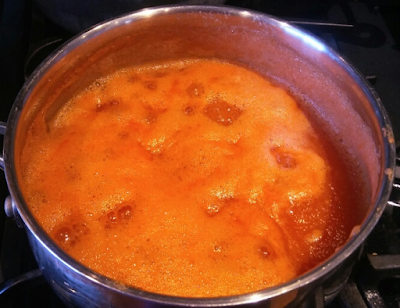This classic Indian condiment is spicy, herbal and delicious on grilled meats, vegetables, rice, and other foods. It is also notable for involving few ingredients and very few possible allergens.
Grocery store peppers are coated with wax which may contain corn, soy or dairy products, so you may need to mind where get your peppers. Alternatively, you can avoid the wax by roasting and peeling the peppers, but I don't think cooked peppers are quite as good in this sauce.
If yogurt is a problem, the version with coconut milk is also authentic and just as good.
3/4 c. fresh mint leaves (stems removed)
1/2 c. cilantro leaves (stems removed)
6 green chili peppers, seeds removed (You can use more or less peppers,
depending on how much heat you like) See Produce in the Glossary
2 cloves of garlic
1/2-inch piece of ginger, peeled and sliced
1 tsp. fresh squeezed lemon or lime juice (See Juice in the Glossary)
1/4 c. yogurt or coconut milk (See Coconut and Milk in the Glossary)
salt (See Salt in the Glossary)
Put the mint, cilantro, chili peppers, garlic, ginger and lemon juice into a food processor and puree. Stir in the yogurt or coconut milk and salt to taste. Refrigerate.
2 cloves of garlic
1/2-inch piece of ginger, peeled and sliced
1 tsp. fresh squeezed lemon or lime juice (See Juice in the Glossary)
1/4 c. yogurt or coconut milk (See Coconut and Milk in the Glossary)
salt (See Salt in the Glossary)
Put the mint, cilantro, chili peppers, garlic, ginger and lemon juice into a food processor and puree. Stir in the yogurt or coconut milk and salt to taste. Refrigerate.









